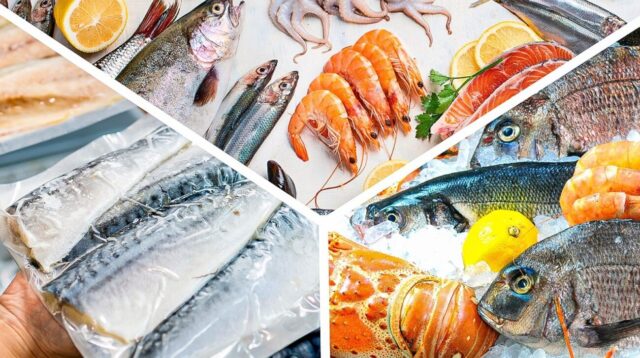
The critical role of proper fish packaging in the seafood industry cannot be overstated. This article will delve into the various facets of fish packaging, emphasizing its vital importance in maintaining product integrity from catch to consumer.
We will explore how appropriate packaging techniques preserve the freshness and quality of fish, protect against environmental contamination, and extend shelf life.
Additionally, we’ll examine the environmental considerations and the importance of compliance with regulatory standards. Understanding the impact of packaging on consumer perception and marketability will also be a focal point.
This comprehensive exploration aims to underscore the essential nature of effective fish packaging in sustaining the seafood industry’s viability and reputation.
Preserving Freshness and Quality
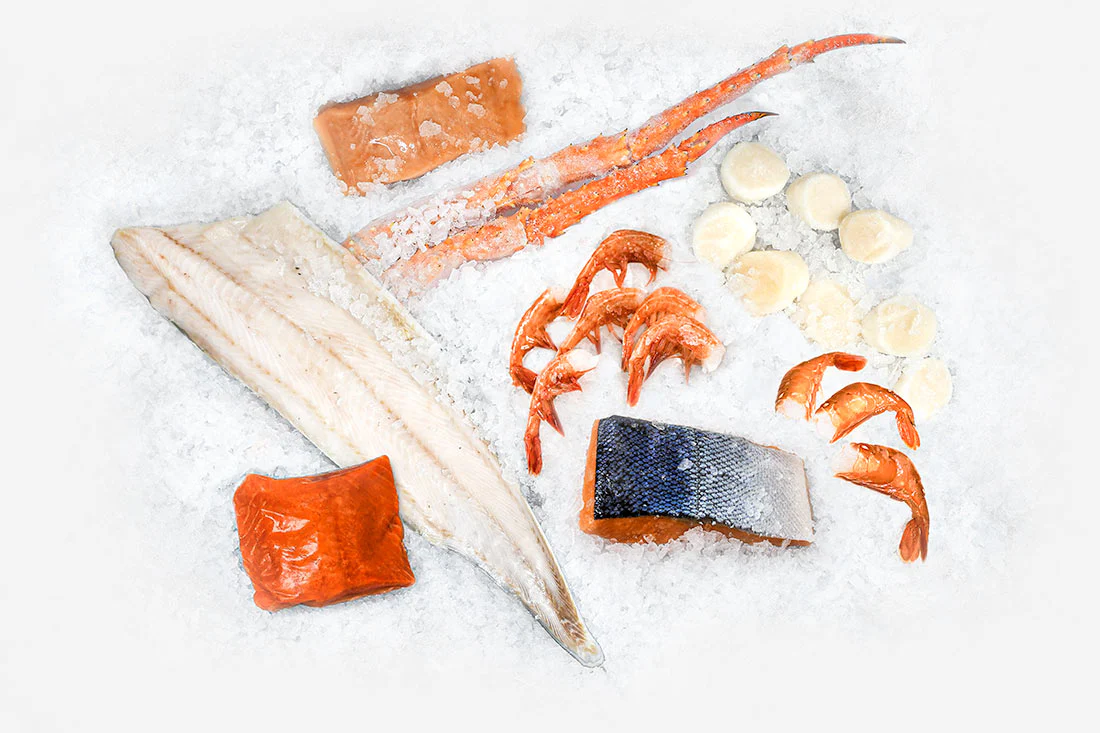
Enhancing the preservation of freshness and quality in fish packaging involves several key strategies:
- Advanced barrier materials ─ Utilization of materials like PVDC (Polyvinylidene Chloride) and EVOH (Ethylene Vinyl Alcohol), which offer superior protection against oxygen and moisture.
- Vacuum packaging ─ Removing air from the package to minimize oxidation and bacterial growth.
- Modified atmosphere packaging (MAP) ─ Adjusting the composition of gases within the packaging (typically a mix of carbon dioxide, nitrogen, and oxygen) to extend shelf life.
- Chilled packaging solutions ─ Implementing ice packs or gel packs to maintain a consistent, low temperature, is critical for preserving the fish’s sensory qualities.
- Protective coatings ─ Application of edible films or coatings that can enhance barrier properties and potentially deliver antimicrobial agents.
- Smart packaging technologies ─ Incorporating sensors or indicators that monitor and display the freshness of the product.
These techniques, collectively, ensure that the fish retains its essential characteristics – freshness, nutritional value, and appealing appearance – crucial for consumer satisfaction and market success.
Protecting Against Contamination
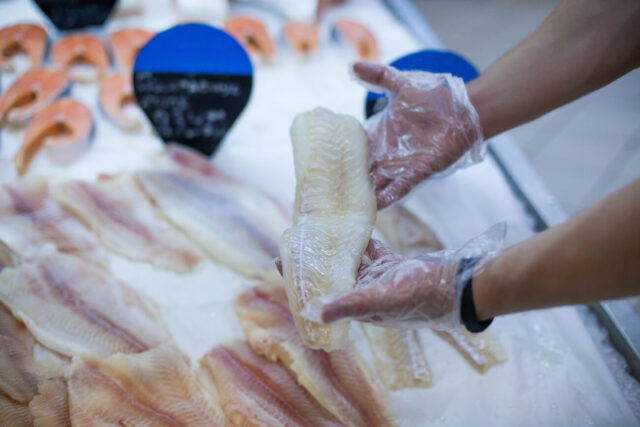
The integrity of frozen fish packaging is critical in ensuring the product remains free from contamination. This protection is multifaceted, encompassing both physical and chemical safeguards. Physical barriers are established using robust, leak-proof materials that prevent external contaminants, such as dust, dirt, and other particulates, from infiltrating the packaging. These materials are also resistant to punctures and tears, providing an additional layer of safety during transportation and handling.
Chemically, the packaging materials are chosen for their inert properties, ensuring they do not interact with the fish, thereby preventing any potential chemical contamination. This is particularly crucial in frozen fish packaging, where the product may be stored for extended periods, and any chemical interaction could compromise its quality and safety.
Furthermore, the packaging process itself is conducted in controlled environments, adhering to the highest standards of cleanliness and hygiene. This includes regular sanitization of packaging facilities and equipment, as well as strict personal hygiene protocols for staff involved in the packaging process. Such measures are essential to eliminate the risk of cross-contamination from external sources or other food products.
The role of advanced technologies in contamination prevention cannot be overstated. Innovations such as antimicrobial packaging materials, which actively inhibit the growth of bacteria and other microorganisms, are being increasingly employed. Additionally, smart packaging solutions, equipped with indicators for temperature breaches or spoilage, provide real-time monitoring of the product’s condition, enabling proactive measures to be taken if the product’s integrity is compromised.
In summary, protecting frozen fish products from contamination is a comprehensive process that combines robust physical barriers, chemical inertness of materials, stringent hygienic practices, and cutting-edge technology. These measures collectively ensure that the frozen fish remains safe, hygienic, and of the highest quality when it reaches the consumer.
Enhancing Shelf Life

Enhancing the shelf life of fish products through innovative packaging solutions is a key focus in the seafood industry. The approach involves a combination of material science and packaging technologies. Materials that provide excellent barrier properties against oxygen and moisture are crucial, as these elements can accelerate spoilage and degrade quality.
Modified atmosphere packaging (MAP) is one such technology that significantly extends shelf life. MAP involves altering the gas composition inside the packaging, typically by increasing carbon dioxide or nitrogen levels, which slows down bacterial growth and oxidative reactions.
Furthermore, the use of vacuum packaging removes air from the package, limiting the growth of aerobic bacteria and other spoilage organisms. The integration of these methods with proper cold chain management ensures that fish products retain their freshness, flavor, and nutritional value for an extended period, making them more appealing to consumers and more efficient for distribution.
This enhanced shelf life is not only beneficial for consumer satisfaction but also contributes to reducing food waste, a critical concern in the global food supply chain.
Sustainability and Environmental Impact
In the realm of fish packaging, the emphasis on sustainability and minimizing environmental impact is gaining significant momentum. This shift is driven by a growing recognition of the ecological implications of packaging materials, encompassing their production, usage, and disposal processes.
The move towards sustainable packaging involves several key aspects:
- Eco-friendly materials ─ There’s a rising trend in using materials that are biodegradable or compostable. These materials, such as PLA (Polylactic Acid) derived from cornstarch, offer a viable alternative to traditional plastics. They decompose naturally, reducing landfill waste and the release of harmful chemicals into the environment.
- Recycling and reusability ─ The industry is also focusing on materials that can be recycled or reused. This approach not only reduces the amount of waste generated but also conserves resources by extending the life cycle of the packaging materials.
- Reduced carbon footprint ─ Attention is being given to the carbon footprint of packaging materials. This involves evaluating and minimizing the energy consumption and greenhouse gas emissions associated with their production and transportation.
- Innovative technologies ─ Advanced technologies are being explored to create packaging solutions that are both efficient and environmentally friendly. For instance, the development of edible packaging, derived from natural and renewable sources, is an area of growing interest.
- Regulatory compliance and standards ─ Adherence to environmental regulations and standards is another critical factor. Packaging solutions must comply with increasingly stringent laws aimed at reducing environmental harm.
This holistic approach to sustainability in fish packaging reflects a commitment to responsible stewardship of the environment while meeting the needs of the seafood industry. It not only helps in preserving the natural ecosystem but also aligns with the evolving consumer preferences towards environmentally conscious products.
Compliance with Regulations
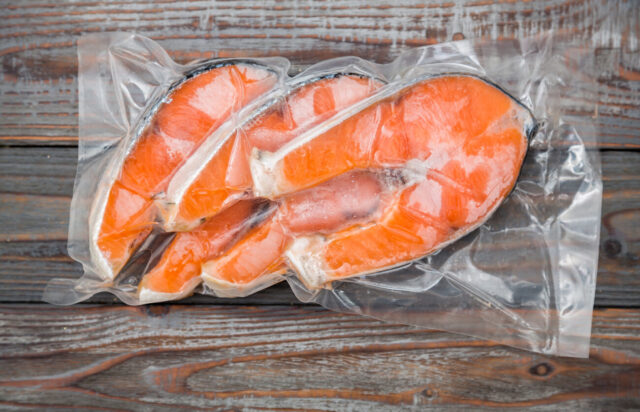
Compliance with regulations in fish packaging is a critical aspect that encompasses a wide range of standards and guidelines. These regulations ensure the safety and quality of fish products, protecting consumers and maintaining public health.
Key areas of regulatory compliance include using food-safe materials that are free from harmful chemicals and contaminants. Packaging must also adhere to labeling standards, which require clear and accurate information about the product, including its origin, ingredients, and expiry date.
Additionally, there are specific regulations regarding the packaging of certain types of fish, particularly those that are prone to higher rates of spoilage or contamination. These rules are not only mandatory for legal market operation but also form a basis for consumer trust and brand integrity in the seafood industry. Compliance with these regulations requires ongoing vigilance and adaptation to changing standards, reflecting the industry’s commitment to safety and quality.
Consumer Perception and Marketing
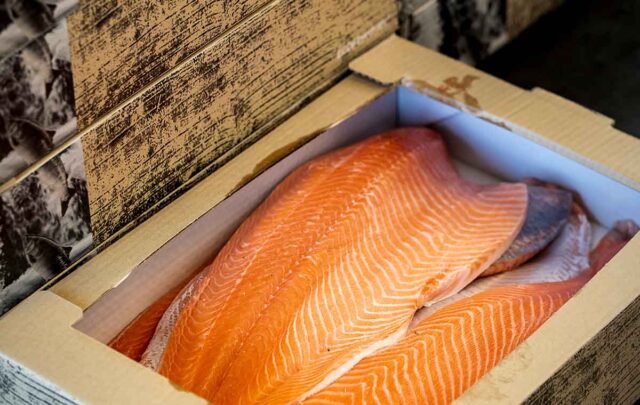
Consumer perception and marketing are integral to the success of fish products, with packaging playing a pivotal role. The packaging design serves as the primary interface between the product and the consumer, influencing purchasing decisions. A visually appealing and informative package can significantly enhance the product’s attractiveness, conveying quality and freshness.
Furthermore, eco-friendly packaging resonates with environmentally conscious consumers, potentially swaying their choice. Marketing strategies leverage packaging design to create brand identity and differentiation in a competitive market.
This aspect of packaging goes beyond mere aesthetics; it is about communicating the values and quality of the product, aligning with consumer expectations and trends. The ability of packaging to effectively communicate these elements is crucial in capturing market share and building consumer loyalty in the seafood industry.
The article’s exploration into the world of fish packaging has underscored its multifaceted importance in the seafood industry. From ensuring freshness and quality to protecting against contamination, enhancing shelf life, and considering environmental impacts, effective packaging is pivotal. It not only meets regulatory standards but also significantly influences consumer perception and marketing.
The intricate balance of these aspects highlights the complexity and significance of proper fish packaging. This comprehensive approach ensures that fish products are not only safe and appealing to consumers but also sustainably packaged, reflecting a commitment to both quality and environmental responsibility in the seafood industry.







